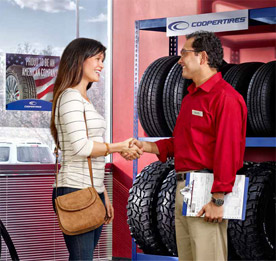Trusted Tire Shop Morris: Comprehensive Tire Solutions and Exceptional Service
Trusted Tire Shop Morris: Comprehensive Tire Solutions and Exceptional Service
Blog Article
Tire Solution: The Influence of Weather
When it pertains to making sure optimal performance and safety when traveling, comprehending the influence of weather on tire solution is critical. From scorching heat to icy roadways, each climate element can considerably influence tire performance and general driving experience. By diving right into the results of differing weather on tires, chauffeurs can get beneficial insights that may improve their lorry's efficiency and longevity. In this conversation, we will discover the intricate partnership in between weather and tire service, dropping light on the value of weather-specific tire upkeep methods and considerations.
Heat and Tire Performance
When revealed to heats, tires experience modifications in performance that can considerably affect car safety and handling. The warm generated from prolonged driving or heat problems creates the tire rubber to soften, causing minimized walk life and enhanced wear. As the rubber becomes softer, the tire's grip when driving lessens, impacting braking ranges and total grip. In extreme instances, extreme heat can also create tire blowouts, presenting a severe safety and security threat to the car and its residents.
In addition, high temperature levels can accelerate the process of tire aging, causing the rubber to degrade much more promptly. This can result in splits, bulges, and various other forms of damages that compromise the structural honesty of the tire. To reduce the effects of warmth on tire performance, motorists should regularly examine their tire pressure, revolve tires to make sure even wear, and evaluate for any type of indications of damage. Additionally, utilizing tires specifically created to withstand heats can aid maintain ideal efficiency and safety on the road.
Winter Impacts
Winter problems can have a substantial influence on tire efficiency and safety. As temperatures drop, tire rubber can solidify, causing reduced traction on icy or snow-covered roads. In winter, tires may also lose air pressure more rapidly, which can affect handling and gas efficiency. In addition, cool temperature levels can trigger tire sidewalls to stiffen, enhancing the danger of damage from potholes or various other roadway threats.
To alleviate the impacts of winter on tires, it is crucial to regularly check tire stress and inflate them to the maker's suggested degrees. Utilizing wintertime or all-season tires created for winter conditions can also enhance traction and grasp on icy or snowy roads - mopar tire service specials. Proper tire upkeep, consisting of regular examinations for wear and damage, comes to be also much more crucial throughout colder months to make sure optimal efficiency and safety
Rainy Issues Impact
Throughout rainy conditions, tire performance and security can be considerably influenced by the wet road surfaces and lowered presence. The step pattern of tires plays a crucial duty in preserving grip on damp roads. Tires with worn-out treads are more vulnerable to hydroplaning, where a layer of water constructs up in between the roadway and the tire surface area, causing loss of traction. To combat this, motorists must on a regular basis check their tires for appropriate walk deepness and consider investing in tires specifically made for damp conditions.

Snow and Tire Safety
Snow-covered roadways position one-of-a-kind challenges for motorists, emphasizing the importance of proper tire choice and upkeep. When driving in snowy problems, having the best tires can make a considerable distinction in security and efficiency. Winter tires are developed with unique rubber substances and tread patterns to supply far better traction on snow and ice compared to all-season tires. The deeper treads and sipes of winter months tires help hold the roadway much better, lowering the risk of sliding and sliding.
Along with utilizing winter months tires, it is crucial to guarantee they are appropriately blown up. Winter can create tire stress to go down, affecting grip and handling (mopar tire service specials). Frequently inspecting and maintaining the right tire stress is necessary for ideal performance in snowy conditions

Weather-Related Tire Upkeep
When faced with numerous weather, proper tire look what i found upkeep becomes a vital aspect of car safety and security and performance. Weather-related tire upkeep incorporates a variety of methods targeted at ensuring ideal tire feature and longevity in different climate circumstances. One crucial aspect of weather-related tire maintenance is tire pressure guideline. Changing temperatures can trigger tire stress to differ, impacting traction and gas performance. Frequently adjusting and checking tire stress according to supplier recommendations is vital for risk-free driving in transforming climate condition. In addition, tire step deepness plays a significant role in taking care of different weather elements. Tires with sufficient walk depth offer far better grasp on damp or icy roadways, minimizing the danger of skidding or hydroplaning. Checking tire walk regularly and changing tires when step wear gets to a particular deepness is essential for keeping grip and security in unfavorable climate. By focusing on weather-related tire upkeep, chauffeurs can boost safety and security, enhance vehicle performance, and lengthen the life expectancy of their tires.
Verdict
In verdict, climate Find Out More conditions have a considerable impact on tire efficiency and safety and security (morris tire and alignment). From warm affecting tire pressure and put on to chilly weather condition decreasing grip, it is essential to consider the weather condition when preserving and making use of tires.
In this conversation, we will explore the elaborate relationship in between weather problems and tire solution, dropping light on the importance of weather-specific tire maintenance practices and considerations.

Report this page